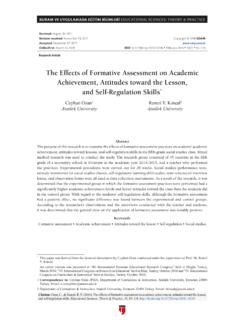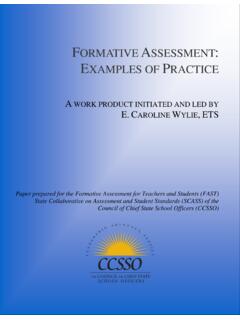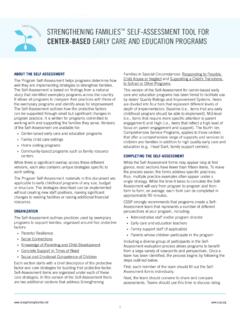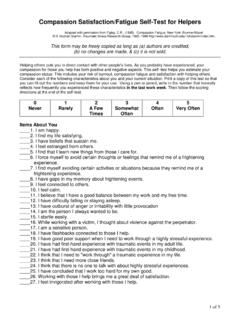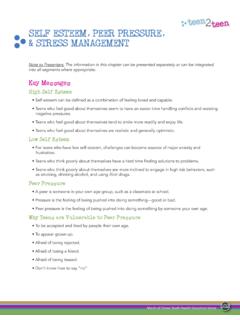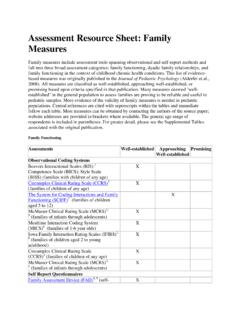Transcription of Guidelines and Rubrics Teacher’s Self Assessment
1 Guidelines and Rubrics | Teacher s self Assessment1 MARCH 2019 Teacher s self AssessmentGuidelines and RubricsDepartment of Teacher Education National Council of Educational Research and Training Sri Aurobindo Marg, NewDelhi-110 016 March, 2019 Guidelines and Rubrics | Teacher s self Assessment2 Table of ContentsForeword 3 Preface 4 List of Abbreviations 5 Introduction
2 6 Purpose of Teacher s self Assessment 7 Teacher s self Assessment Rubrics (TSAR) 8 Structure of TSAR 8 Guidelines for Teachers 11 Guidelines for Head Teachers/Principal/CRC/BRC/DIET 11 Guidelines for Administrators (District/State level) 12 Teacher s Profile 13 Teacher s self Assessment Rubrics 15 Appendix 32 Guidelines and Rubrics | Teacher s self Assessment3 ForewordTeachers play a crucial role in shaping the minds of children and in turn the quality of education.
3 Teachers are expected to demonstrate understanding of subject matter; establish a positive relationship with students; create an effective learning environment to ensure enriching experiences; conduct students Assessment ; work closely with colleagues and the community; and exhibit professional commitment and accountability. NCERT has developed Learning Outcomes for elementary classes in various subjects and Learning Outcomes for secondary classes are being finalized. To help the teachers understand and achieve the learning outcomes as per curricular expectations, some suggestive pedagogical processes are also provided in the document of Learning Outcomes.
4 In 2013, NCERT developed Guidelines and tool for assessing the teacher s performance at the elementary level called PINDICS which helps in self Assessment of teachers. The Cluster Resource Centre /Block Resource Centre or other supervisory staff can also use PINDICS for assessing the performance of teachers, supporting them through appropriate teacher development programmes, and making the teachers accountable to their responsibilities. In continuation with PINDICS, NCERT has made an effort to develop Guidelines along with a tool for assessing the teacher s performance up to senior secondary level and we are happy to present this document titled Teacher s self Assessment Rubrics (TSAR) to teachers and other stakeholders to use it for self Assessment and further professional development has been developed through a series of in- house meetings and sharing workshops with teachers, teacher educators, and other experts.
5 The draft document was tried out with teachers from state board schools, Kendriya Vidyalalyas, Navodaya Vidyalayas, Demonstration Multipurpose Schools and private schools. Feedback was also obtained from the faculty members of SCERTs, DIETs and Samagra Siksha Abhiyan during Regional Consultative cum Sharing Workshop. The document is suggestive in nature and States/UTs can suitably use it by adopting or adapting it. The efforts made by the Department of Teacher Education in finalizing this document is appreciated.
6 We wish to thank all teachers, teacher educators, and other experts and institutions for their contributions in developing TSAR. We solicit comments/ feedback from different stakeholder to bring further improvement in this SenapatyNew Delhi DirectorAugust 2019 National Council of Educational Research and TrainingGuidelines and Rubrics | Teacher s self Assessment4 PREFACEThe society is evolving continually and so is the performance demand in every profession. The profession of teaching is no exception.
7 The demands on teachers are becoming increasingly complex and some of the challenges to the profession can be counted on fingers, in terms of - multicultural classrooms, integration of children with special needs in the mainstream, use of information and communication technologies, interactions with the community and the parents, etc. Though, most teachers try to deliver to their best, the quality of deliverance needs to be in question sometimes. This calls in for a need of Assessment . Teachers Assessment which refers to the process of evaluation of individual teachers to judge their performance and/or providing feedback to help improve their practice, ultimately aims to strengthen their accountability.
8 In this light, teachers self Assessment promises to encourage teachers to reflect on the personal, organisational and institutional factors that have an impact on their teaching. Keeping this idea in centre focus, the National Council of Educational Research and Training has come up with a guideline and a tool called Teachers self Assessment Rubrics that will help a teacher right from elementary to senior secondary level to participate intricately in his/her self so as to assist the teachers in self assessing not only their daily teaching practices but also their overall role as a teacher, TSAR comprises of six Performance Standards (PS)
9 With certain Performance Indicators (PI) under each PS. These forty PI(s) are thereby assessed on a continuum specifying the Levels of Performance ranging from Level1 to Level 4 as per four Descriptors. Level 1 indicates that the teacher has not approached the expected standard as per that particular PI and Level 4 indicates that the teacher is beyond the level of expectations as per that PI. The descriptors given under each level for every Performance Indicator will help the teacher to understand where he/she stands and what more he/she needs to do in order to at least reach the expected level.
10 Further, it will also help to understand their expected roles and responsibilities in facilitating students learning. self Assessment by teachers not only helps one to identify his/her strengths and weaknesses, but to evolve as a reflective practitioner. Thus, this document as a self Assessment tool for teachers presents with a prospect to contribute successfully in Continuous Professional Development activities. It will also provide the teachers with an occasion to display their exceptional performances.










